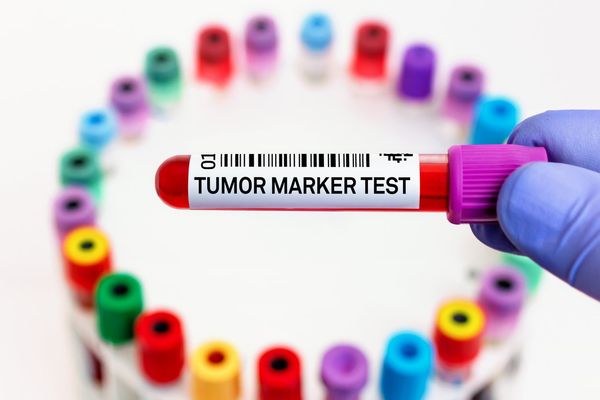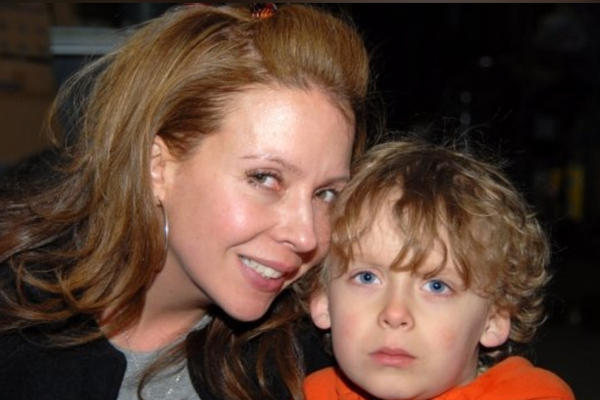Elisa Seeger's son Aidan was 6 1/2 years old when he started having vision problems. Seeger thought her son just needed glasses, but after what she calls a "diagnostic odyssey," going from one specialist to another, she learned that he had a rare genetic neurological disorder called adrenoleukodystrophy (ALD). The once active first grader, who loved sports and was a good student, soon lost his ability to function. A year later, in 2012, he died.
"During this time I was researching anything that could possibly change the course of this condition," Seeger said. "I came across the fact that there was a newborn screening test for ALD, but not one state was putting it to use. This would have meant the difference between life or death, not only for Aidan, but for thousands of other boys across the country. With early diagnosis, treatment could have intervened before the damage was done."
Screening saves lives
Newborn babies are routinely screened for genetic, endocrine and metabolic disorders, as well as for hearing loss and congenital heart defects. Newborn screening began in the 1960s, after research by the National Institutes of Health (NIH) discovered that a disease called phenylketonuria (PKU) could be detected by analyzing blood after birth. Now, newborns are screened for up to 81 genetic disorders, but the test is still sometimes referred to as the PKU test.
"The hallmark of newborn screening is that we can detect something in newborns that's unobservable, but by looking at either physiological or blood-based tests, we can determine that a disease is there and intervene," said Amy Brower, associate director of the Newborn Screening Translational Network at the American College of Medical Genetics and Genomics.
To conduct genetic testing, blood is taken from the baby's heel at the hospital 24 to 72 hours after birth. Parents are typically informed that their baby will be screened, but the screening is done without requiring any additional consent. The blood sample will usually be sent to a state lab for analysis, and later, parents may be notified by their pediatrician or the state public health program if anything unusual is detected. According to the Centers for Disease Control and Prevention (CDC), each year, about 12,500 newborns are diagnosed with one of the core conditions that are detected during screening.
"The main goal is to get that diagnosis as quickly as possible in the hands of the parents, the pediatrician and individuals who can make the choices for care and treatment of that newborn with the goal of saving their lives and optimizing outcomes," Brower said.
Discrepancy between states
The federal Advisory Committee on Heritable Disorders in Newborns and Children, of which Brower is a member, maintains and updates a list of disorders that it recommends for screening, called the Recommended Uniform Screening Panel (RUSP). It's not a mandate, and individual state programs ultimately determine what will be screened. Currently, there are at least 29 conditions that are screened for in every state. While RUSP has helped close the gap between different states, there are still disparities.
A baby born in Louisiana, for example, will currently be tested for 39 core and secondary RUSP conditions, versus 60 core and secondary RUSP conditions in Minnesota or Vermont, according to data from the Newborn Screening Translational Research Network (NBSTRN). Some states screen for additional disorders beyond RUSP; California, for example, screens for a total of 80 conditions.
After her son's death, Seeger launched the ALD Alliance to lobby her home state of New York to make ALD screening mandatory. In March 2013, Aidan's Law was signed in New York, making it the first of several states to test for ALD. Thanks to advocates like Seeger, ALD was subsequently added to RUSP in 2016. Still, at least 18 states do not screen for ALD.
"I realized, wow, this is just not okay, because I have friends all over the country, and knowing that a baby born in another state will not have the same chance seemed incomprehensible to me," Seeger said. "These parents — just like us — will not know until it's too late."
There are currently four core RUSP conditions that are still not screened for in every state: ALD, pompe, spinal muscular atrophy, and mucopolysaccharidosis type I. Seeger's ALD Alliance is among the organizations pushing for legislative change.
"When I've spoken in the states [that aren't testing for ALD] what I hear is that funding is the number one reason why states are not moving forward. States voted unanimously to add ALD, but then there's a waiting point. Questions arise about, where are we getting the funding to do this?" Seeger said.
ALD alliance and other organizations are asking for Congress to approve $15 million a year that would go directly to the states so that every state can become RUSP-compliant by 2025.
"It's a small amount of money on the federal level to ensure that babies don't die when there is testing and viable treatment," Seeger said, pointing out that in contrast, her son's medical bills for inpatient care during the last 10 months of his life was nearly $5 million dollars. "It cost New York state $500,000 to add ALD newborn screening," she added.
How parents can advocate for newborn screening
Get informed. Many parents — including Seeger when her son had just been delivered — don't know about newborn screening. You can start with the NBSTRN data tools to better understand what your state tests for and how it stacks up to other states. You can then find out more by checking out your state's department of health website.
Understand the impact. While parents can request religious exemptions from newborn screening, 99% of newborns are screened. Many disorders need immediate intervention to prevent debilitation or death. For example, breast milk can be harmful for newborns with PKU, who need to avoid the amino acid phenylalanine to live a healthy life.
Supplemental testing may be an option. You can consider getting additional testing from other labs. Your insurance may cover some additional screening, or you may need to pay out of pocket.
If needed, get genetic counseling. There are thousands of rare diseases. If you know that a family member was diagnosed with a rare genetic condition, consider talking to a geneticist before giving birth to learn the best course of action.
Get active. You can talk to your state legislature or connect with organizations like ALD Alliance about efforts to improve newborn screening. Additionally, anyone can advocate for more disorders to be added to RUSP. "Any stakeholder — meaning parents, families, researchers, pediatricians, geneticists — can nominate a condition to this federal committee," Brower explained. "You can fill out a form on the website and then you can actually testify four times a year in front of this committee. They have open public comments for people to say 'My family has this disorder. I think that it should be part of newborn screening.'"
For Brower, newborn screening isn't just a professional passion; it's personal.
Brower's son, now 29, has a condition called severe combined immunodeficiency (SCID), also known as "bubble boy disease." SCID was the first condition nominated for and added to national newborn screening recommendations. Had newborn screening been available when her son was born, the course of his life would have been completely different.
"My son's type of SCID is curable with early intervention. Chances are that kids born today with my son's type of SCID could get a transplant, get an enzyme replaced or get gene therapy, and then go on to live healthy lives," she said.
That's why, Seeger said, it's important for all parents to know about their state policies on newborn screening and why she advocates for a national effort on testing.
"What we're calling this effort is the eradication of death by ZIP code," she said. "It shouldn't matter what ZIP code you live in, every single baby is as important as the next."







